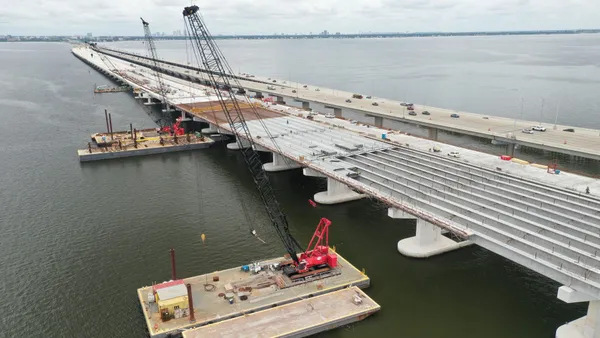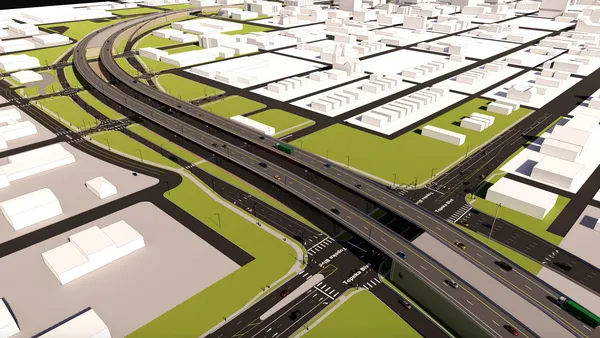Dive Brief:
- New York City’s Metropolitan Transportation Authority hasn’t fully implemented a plan for protecting the subway system against climate change, according to an audit by New York State Comptroller Thomas DiNapoli released Friday. The system’s vulnerabilities were on full display that same day as intense rainfall inundated the city, flooding subway and commuter rail lines.
- The MTA’s New York City Transit agency approved capital projects without making sure they were resistant to flooding, according to the report, and also inconsistently activated extreme weather plans and failed to sufficiently check equipment to ensure it could withstand severe weather. The audit spanned 2009 through 2022.
- In 2009, the MTA issued the Blue Ribbon Commission’s Report on Sustainability with 93 capital project and policy recommendations. The audit found MTA failed to implement the most important one: developing a climate change master plan. It also found projects were often incomplete, not finished on time or on budget or insufficiently documented.
Dive Insight:
The MTA has done nearly $8 billion in federally funded resiliency work since Superstorm Sandy damaged the transit system in 2012, the audit notes, but the climate action plan is not expected to be published until later this year, nearly a decade after it was due. Meanwhile, climate change poses a serious problem for the system, the audit found.
“In the decade since Superstorm Sandy, weather-predicting models have indicated that, with rising sea levels, the range and depth of storm surge will increase across New York City. With the sea level rise, future storms will flood more property,” the report said. “Without adequate investment in adaptation measures, climate change will have even greater adverse impacts on the MTA’s vital infrastructure.”
However, the agency’s efforts alone likely won’t be enough to keep the subway system from flooding, since New York City’s sewers were designed to handle less water per hour than what is now common, according to The New York Times.
The city’s drainage systems can handle 1.75 inches of rainfall per hour, but Friday’s storm brought more than 2 inches between 8 a.m. and 9 a.m. and kept on coming, dropping 6 inches total. Stormwater runoff backed up into streets and swamped subway stations in Brooklyn and Queens, causing delays throughout the system.
Experts say the city will likely continue to experience such flooding as it struggles to adapt its infrastructure to extreme weather patterns, according to The New York Times.
The city does have resilience efforts underway. NYC’s Department of Design and Construction is building infrastructure that will enable it to bounce back from extreme weather, according to assistant commissioner of infrastructure design and engineer Thu-Loan Dinh. That includes solutions like flood barriers, infiltration basins, green roofs and permeable pavers. Holding tanks and gardens set in sidewalks can also absorb rainwater.
Across the country, the climate is changing more quickly than building codes are being updated, National Institute of Building Sciences panelists said at a recent conference, and the U.S. lacks consistent flood design standards for infrastructure. To help mitigate the impact of flooding, the National Weather Service last week launched a four-year flood forecasting map experiment that shows when, where and how much floodwaters are expected to impact specific areas in advance of a storm.
The new maps do have limits — they can’t yet forecast urban flash floods like New York City’s caused by intense rainfall on pavement and overwhelmed stormwater systems, rather than by rivers and streams. “That’s at the very edge of our scientific limits,” said David Vallee, director of the Service Innovation and Partnership Division of the Office of Water Prediction, but the team is working on it.














